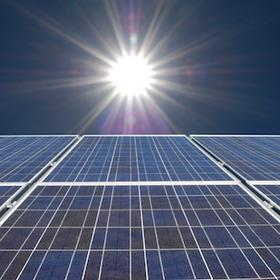The report prepared by the Victorian Competition and Efficiency Commission into solar feed in tariffs in the state has provoked a mixed reaction, with approval for its criticism about grid access for distributed energy, but concerns about its apparent reliance on a “market based” system.
VCEC’s report is the second major analysis of state-based solar tariffs by a state-based authority, and its report suggests a lot more subtlety than the equivalent IPART report in NSW.
Its report included brickbats for the energy utilities, which it said had done little to provide access to the grid for distributed generation, and bouquets for the technology itself, which it said was clearly offering a low cost source of electricity that brought efficiency benefits to the overall network. It also recommended that tariffs be opened up to other low emissions technologies, such as fuel cells.
One of its key conclusions is to ensure a mechanism is introduced to ensure that the owners of distributed generation are rewarded for the value they contribute to the energy market, and that they are not disadvantaged by unnecessarily complex processes that prevent their deployment.
Regardless of tariffs set, access is clearly going to be the critical issue for the industry going forward. VCEC has particularly harsh words for the incumbent utilities, noting that they were less responsive to customers with distributed generation and were often not willing to purchase their electricity. Unlike IPART, which refused to acknowledge the power of incumbents, VCEC says their actions will be carefully monitored.
Nevertheless, VCEC is supporting the introduction of a “market-based” tariff which would be decided by the utilities, although it suggested a region of 6c-8c for the “energy” value of solar PV exported back into the grid, and also suggested that owners of distributed energy negotiate a tariff that reflected the “network” value. Good luck with that.
The Clean Energy Council says it fears that consumers could miss out on as much as half of the money they were entitled to for their solar power. “We agree that as the cost of solar power continues to drop we should move beyond incentive based feed-in tariffs to a system where consumers are simply paid the fair value for their solar power,” CEC policy director Russell Marsh said.
However, he said it would be “virtually impossible” for consumers to actually get the additional payment to reflect the network value, meaning they will miss out on up to half the value they are entitled to. The CEC estimates the fair and reasonable value of solar is between 12-16c/kWh.
The Alternative Technology Association went further saying that for all its analysis, VCEC has “fundamentally misunderstood how the energy market works and therefore what the value of the electricity exported by distributed renewable energy systems actually is.”
Damien Moyse, ATA’s energy policy manager said while VCEC acknowledged that retailers are not supportive of solar power, it did not want to fix the problem and its recommendations would essentially mean that the rate for electricity fed into the grid from a solar PV system would be set at the discretion of an electricity retailer. “From past experience, this could mean customers are offered as little as 5 cents for each unit of energy,” he said.
“The large electricity retailers are compromised when it comes to distributed generation policy. Increasing the amount of distributed generation such as solar actually places downwards pressure on the wholesale price of electricity – a benefit to all consumers at the expense of large electricity retailers and generators.”
VCEC has recommended the FiT scheme end by December 31, 2013, instead of 2016, or when 75MW of capacity is reached. However, Nigel Morris from Solar Business Services said he estimated the 75MW target would be reached within 3 months – “causing yet another boom-bust cycle for out industry.”
He said it was disappointing that VCEC had been critical of the cost of the scheme when the Australian Energy Market Commission had estimated the cost to Victorian electricity consumers at 0.28% of the average 2012 bill or about $3.80 per year – and declining in future years.










